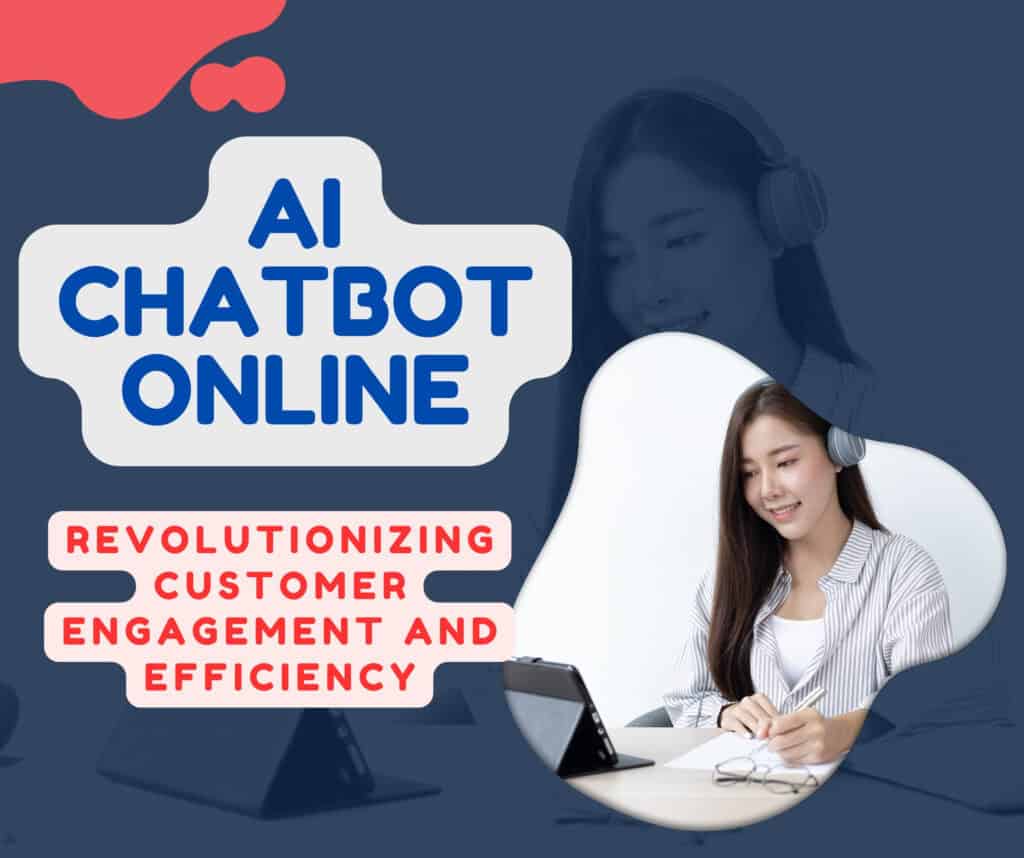In the rapidly evolving digital landscape, businesses are constantly seeking innovative ways to engage with their customers and streamline operations. One of the most transformative technologies in recent years is the AI chatbot. But what exactly is an AI chatbot, and why has it become so crucial in today’s digital era?
Brief Overview of AI Chatbots
An AI chatbot is a sophisticated software application designed to simulate human-like conversations with users through text or voice interactions. Unlike traditional chatbots that operate on a fixed set of rules, AI chatbots leverage advanced technologies such as Natural Language Processing (NLP) and Machine Learning (ML) to understand, interpret, and respond to user queries in a more human-like manner.
These chatbots are powered by AI algorithms that enable them to learn from interactions and improve over time. They can handle a wide range of tasks, from answering frequently asked questions to assisting with complex customer service issues. The key to their effectiveness lies in their ability to comprehend context, recognize intent, and provide relevant responses, making interactions more intuitive and efficient.
Importance of AI Chatbots in the Digital Era
In today’s digital age, where instant gratification and seamless user experiences are paramount, AI chatbots have emerged as a vital tool for businesses aiming to stay competitive and meet customer expectations. Here’s why they are so important:
- Enhanced Customer Engagement: AI chatbots offer 24/7 support, ensuring that customers can receive assistance anytime, anywhere. This constant availability helps businesses maintain high levels of customer satisfaction and engagement, even outside of regular business hours.
- Increased Efficiency: By automating routine tasks and inquiries, AI chatbots free up valuable human resources, allowing employees to focus on more complex and high-value activities. This not only boosts operational efficiency but also reduces response times and improves overall productivity.
- Cost Savings: Implementing AI chatbots can significantly lower operational costs by minimizing the need for a large customer service team. With chatbots handling a substantial portion of customer interactions, businesses can achieve substantial cost savings while maintaining high-quality service.
- Personalization and Insights: AI chatbots are capable of analyzing user data and interactions to deliver personalized experiences and recommendations. They also provide valuable insights into customer behavior and preferences, enabling businesses to tailor their offerings and strategies more effectively.
Affiliate Disclosure: Some of the links in this post are affiliate links, meaning I may earn a commission if you make a purchase. These resources offer free training and tools to help you succeed online.
Try Wealthy Affiliate (For Free).
What is an AI Chatbot?
As businesses and organizations increasingly turn to digital solutions to enhance customer interactions, understanding what an AI chatbot is and how it functions is crucial. In this section, we’ll break down the definition, basic functionality, and different types of AI chatbots to give you a clear picture of this transformative technology.
Definition and Basic Functionality
An AI chatbot, or Artificial Intelligence chatbot, is a computer program designed to simulate conversation with human users, typically via text-based or voice-based interfaces. The primary goal of an AI chatbot is to provide users with automated responses that mimic natural human conversation, enhancing user experience and efficiency in handling inquiries.
The basic functionality of an AI chatbot includes:
- Understanding User Inputs: AI chatbots use Natural Language Processing (NLP) to interpret and understand the user’s messages. NLP enables the chatbot to process human language, extracting meaningful information and identifying user intent.
- Generating Responses: Once the chatbot has understood the user’s input, it generates a relevant and coherent response. This is achieved through a combination of pre-programmed rules and AI algorithms that enable the chatbot to deliver appropriate answers or actions.
- Learning and Improving: AI chatbots leverage Machine Learning (ML) to continually learn from interactions. This means they can refine their responses and improve their understanding of user queries over time, becoming more accurate and effective.
Types of AI Chatbots
AI chatbots can be broadly categorized into two types: rule-based and AI-based. Each type has distinct characteristics and applications:
- Rule-Based Chatbots:
- Definition: Rule-based chatbots operate based on predefined rules and scripts. They follow a set of instructions created by developers to respond to specific keywords or phrases.
- Functionality:
- Keyword Matching: These chatbots use keyword matching to identify user queries and trigger appropriate responses. For example, if a user types “hours of operation,” the chatbot may respond with the business’s opening hours.
- Limited Flexibility: Rule-based chatbots are limited by their predefined scripts. They may struggle with complex queries or variations in language that fall outside their programmed rules.
- Applications: Ideal for handling straightforward and repetitive tasks, such as providing basic information or guiding users through simple processes.
- AI-Based Chatbots:
- Definition: AI-based chatbots, also known as intelligent or conversational chatbots, use advanced AI technologies like NLP and ML to understand and generate responses. They can handle more complex interactions and adapt to diverse user inputs.
- Functionality:
- Contextual Understanding: AI-based chatbots are capable of understanding the context of a conversation, allowing them to respond more naturally and accurately. They can grasp nuances in language and follow the flow of conversation.
- Continuous Learning: These chatbots learn from each interaction, improving their performance over time. They can adapt to new topics, handle a broader range of queries, and provide more personalized responses.
- Applications: Suitable for more dynamic and complex use cases, such as customer support, personal assistants, and engaging users in interactive experiences
Benefits of Using AI Chatbots Online
AI chatbots have become indispensable tools for businesses aiming to improve their customer service and operational efficiency. By integrating AI chatbots into their systems, companies can reap a wide range of benefits. Here’s a closer look at some of the key advantages:
Enhanced Customer Service
- 24/7 Availability:
- Around-the-Clock Support: One of the most significant benefits of AI chatbots is their ability to provide constant support. Unlike human agents who work in shifts, AI chatbots are available 24/7, ensuring that customer inquiries are addressed at any time of the day or night.
- Global Reach: For businesses operating in multiple time zones, AI chatbots ensure that customers from different regions receive timely assistance, eliminating the limitations of time zone differences and improving global customer satisfaction.
- Instant Response Times:
- Immediate Assistance: AI chatbots can handle multiple queries simultaneously, delivering instant responses to users. This rapid response capability helps in addressing customer concerns promptly and reduces wait times, which is crucial for maintaining a positive user experience.
- Efficiency in Handling Common Queries: By quickly answering frequently asked questions and handling routine tasks, AI chatbots prevent delays and ensure that customers receive the information they need without having to wait for a human agent.
Cost Efficiency
- Reduced Need for Human Agents:
- Automating Routine Tasks: AI chatbots can handle a variety of routine and repetitive tasks, such as answering common questions, processing basic transactions, and providing standard information. This automation reduces the reliance on human agents for these tasks.
- Scalability: As businesses grow, AI chatbots can scale to handle increasing volumes of customer interactions without the need for proportional increases in human staff, thus making them a cost-effective solution.
- Lower Operational Costs:
- Reduced Staffing Costs: By automating many aspects of customer service, businesses can reduce the number of customer service representatives needed, leading to lower labor costs. This is particularly beneficial for companies with high volumes of customer interactions.
- Efficiency Gains: AI chatbots streamline operations by managing and resolving issues quickly, which reduces the need for extensive human intervention and can lead to significant savings in operational expenses.
Personalization
- Tailored Interactions:
- Customized Responses: AI chatbots utilize data from previous interactions and user profiles to deliver personalized responses. This means that users receive answers and recommendations that are tailored to their specific needs and preferences.
- Enhanced User Experience: By remembering user preferences and past interactions, AI chatbots can offer a more engaging and relevant experience, improving customer satisfaction and fostering loyalty.
- Data-Driven Insights:
- Understanding Customer Behavior: AI chatbots analyze interactions and collect data on customer behavior and preferences. This data provides valuable insights into user needs and trends, helping businesses understand their audience better.
- Improving Services: With data-driven insights, businesses can make informed decisions to enhance their products, services, and customer interactions. For example, identifying common issues or frequently asked questions can lead to improvements in service offerings or updates to FAQs
Benefits of Using AI Chatbots Online
AI chatbots are revolutionizing customer interactions by offering numerous advantages that can significantly enhance business operations. Understanding these benefits can help businesses make informed decisions about integrating AI chatbots into their systems. Here’s a deeper look into the key benefits:
Enhanced Customer Service
- 24/7 Availability:
- Around-the-Clock Support: One of the most compelling benefits of AI chatbots is their ability to provide support around the clock. Unlike human agents who are bound by work hours and shifts, AI chatbots operate 24/7, ensuring that customers have access to assistance whenever they need it. This continuous availability is especially valuable for businesses with a global customer base or those that operate across different time zones.
- Immediate Resolution: The constant availability of AI chatbots helps in addressing customer queries promptly, reducing the frustration of waiting for help. This immediacy in response is crucial for enhancing user satisfaction and maintaining a positive brand image.
- Instant Response Times:
- Rapid Assistance: AI chatbots are capable of processing and responding to inquiries in real-time. This eliminates long wait times and provides customers with immediate answers to their questions. For example, a customer looking for store hours or product information can get a quick response without waiting for a human agent.
- Handling High Volumes: AI chatbots can simultaneously manage thousands of interactions, something human agents cannot match. This ability to handle high volumes of queries efficiently helps in maintaining service quality even during peak times.
Cost Efficiency
- Reduced Need for Human Agents:
- Automation of Repetitive Tasks: AI chatbots excel at automating repetitive and routine tasks such as answering common questions, processing simple transactions, and providing standard information. By handling these tasks, chatbots reduce the need for a large customer service team, allowing human agents to focus on more complex issues.
- Scalable Solutions: As businesses grow, AI chatbots can scale to accommodate increased interaction volumes without requiring proportional increases in staffing. This scalability is particularly advantageous for businesses experiencing rapid growth or seasonal spikes in demand.
- Lower Operational Costs:
- Reduced Labor Expenses: With AI chatbots handling a significant portion of customer interactions, businesses can reduce their reliance on human customer service representatives. This reduction in staffing needs leads to lower labor costs and more efficient resource allocation.
- Operational Efficiency: AI chatbots streamline processes by automating responses and handling tasks quickly. This efficiency not only saves time but also reduces operational costs associated with managing and training a large customer service team.
Personalization
- Tailored Interactions:
- Customized Experiences: AI chatbots leverage data from previous interactions to provide personalized responses. They can remember user preferences, past interactions, and specific needs, allowing them to offer tailored recommendations and solutions. For instance, a chatbot might suggest products based on a user’s previous purchases or preferences.
- Enhanced Engagement: Personalized interactions make customers feel valued and understood, leading to a more engaging and satisfying user experience. This personalized approach can also help in building stronger customer relationships and brand loyalty.
- Data-Driven Insights:
- Analyzing User Behavior: AI chatbots collect and analyze data from customer interactions to gain insights into user behavior, preferences, and trends. This data can be used to identify common issues, popular products, or areas for improvement.
- Informed Decision-Making: Businesses can use these insights to make data-driven decisions that enhance their products, services, and marketing strategies. For example, if a chatbot frequently handles questions about a specific product feature, a business might consider highlighting that feature in their marketing materials or improving it based on user feedback.
Key Features to Look for in an AI Chatbot
When selecting an AI chatbot for your business, it’s essential to evaluate its features to ensure it meets your needs and delivers optimal performance. Here’s a detailed overview of the key features to consider:
Natural Language Processing (NLP)
- Understanding User Intent:
- Contextual Comprehension: A robust NLP engine enables the chatbot to understand the context and nuances of user inputs. This means the chatbot can grasp not only the specific words used but also the underlying intent behind them. For instance, if a user types “I need help with my order,” the chatbot should recognize that the user is seeking assistance related to an existing order.
- Handling Variations in Language: Effective NLP allows the chatbot to interpret variations in phrasing and terminology. Whether a user asks a question directly or uses a more conversational tone, a well-designed NLP system can accurately determine their needs and provide relevant responses.
- Handling Complex Queries:
- Multi-Turn Conversations: Advanced NLP capabilities enable chatbots to manage complex, multi-turn conversations. This involves understanding and maintaining context over several interactions, allowing the chatbot to handle more intricate queries and provide coherent responses throughout the conversation.
- Semantic Understanding: Beyond basic keyword matching, NLP helps chatbots understand the semantics of user queries, allowing them to address more sophisticated questions and scenarios. This is particularly useful for businesses with detailed or technical products and services.
Integration Capabilities
- CRM Systems:
- Seamless Data Access: Integration with Customer Relationship Management (CRM) systems allows the chatbot to access and utilize customer data, such as previous interactions, purchase history, and personal preferences. This integration enhances the chatbot’s ability to provide personalized and contextually relevant responses.
- Enhanced Customer Interaction: By connecting with CRM systems, the chatbot can update customer records, log interactions, and trigger follow-up actions, ensuring a cohesive and informed approach to customer service.
- Social Media Platforms:
- Multi-Channel Support: Integration with social media platforms enables the chatbot to engage with users across various channels, such as Facebook Messenger, Twitter, and WhatsApp. This multi-channel presence allows businesses to reach customers on their preferred platforms and maintain consistent communication.
- Unified Messaging: Through integration, the chatbot can manage interactions from different social media platforms within a single interface, streamlining communication and ensuring that no messages are overlooked.
Start your path to financial success today. Click to begin
Try Wealthy Affiliate (For Free).
User-Friendly Interface
- Easy Setup and Customization:
- Intuitive Design: A user-friendly interface simplifies the setup and customization process for the chatbot. This is crucial for businesses that may not have extensive technical expertise. An intuitive design allows users to configure the chatbot’s functionalities, such as defining responses and setting up workflows, with minimal effort.
- Pre-Built Templates: Many AI chatbot platforms offer pre-built templates and drag-and-drop features that make it easy to create and customize chatbot interactions. This can accelerate deployment and reduce the need for extensive programming knowledge.
- Scalability:
- Adaptable to Growth: Scalability is a critical feature for any AI chatbot, ensuring that it can handle increasing volumes of interactions as your business grows. A scalable chatbot can accommodate more users, queries, and data without compromising performance.
- Flexible Integration: Scalable chatbots can integrate with additional systems and platforms as needed, allowing businesses to expand their chatbot’s capabilities and functionalities over time. This flexibility ensures that the chatbot continues to meet evolving business needs and technological advancements.
Popular AI Chatbot Platforms
In the burgeoning field of AI chatbots, several platforms stand out for their features, capabilities, and use cases. Understanding the strengths and unique offerings of these popular platforms can help businesses select the best solution for their needs. Here’s an in-depth look at three leading AI chatbot platforms: ChatGPT, Dialogflow, and Microsoft Bot Framework.
ChatGPT
- Overview and Unique Features:
- Powered by OpenAI: ChatGPT is developed by OpenAI and is based on the GPT (Generative Pre-trained Transformer) architecture. It utilizes advanced Natural Language Processing (NLP) to generate human-like responses in conversations.
- Conversational Ability: One of ChatGPT’s standout features is its ability to handle a wide range of conversational contexts with remarkable fluency. It can engage in multi-turn dialogues and maintain coherence over extended interactions, making it suitable for complex and nuanced conversations.
- Customizable Responses: ChatGPT allows customization of its responses to align with specific business needs. Users can fine-tune the model with custom data or adjust its behavior to better match their brand’s voice and style.
- Versatility: It’s highly versatile and can be used for various applications, including customer support, content generation, and virtual assistance. Its adaptability makes it a valuable tool for businesses across different industries.
Dialogflow
- Key Advantages and Use Cases:
- Developed by Google: Dialogflow is a Google Cloud product that provides a comprehensive suite for building conversational interfaces. It offers robust NLP capabilities and seamless integration with Google’s ecosystem.
- Rich Integration Options: Dialogflow excels in its integration capabilities, connecting effortlessly with popular platforms such as Google Assistant, Facebook Messenger, and Slack. This flexibility allows businesses to deploy chatbots across multiple channels and touchpoints.
- Pre-Built Agents and Templates: Dialogflow offers a range of pre-built agents and templates to simplify the development process. These resources can help businesses quickly set up chatbots for common use cases, such as answering FAQs or handling booking inquiries.
- Analytics and Insights: The platform provides detailed analytics and reporting features, enabling businesses to track chatbot performance, user interactions, and areas for improvement. This data-driven approach helps in refining the chatbot’s effectiveness and enhancing user experience.
Microsoft Bot Framework
- Integration Options and Benefits:
- Comprehensive Framework: The Microsoft Bot Framework is a powerful platform that provides a comprehensive set of tools and services for building, testing, and deploying chatbots. It supports a wide range of programming languages and technologies, making it a flexible choice for developers.
- Azure Integration: A key benefit of the Microsoft Bot Framework is its integration with Microsoft Azure. This integration provides access to Azure’s cloud services, including cognitive services like NLP, speech recognition, and translation, which enhance the chatbot’s capabilities.
- Multi-Channel Support: The framework supports integration with a variety of channels, such as Microsoft Teams, Skype, and web chat. This multi-channel support ensures that chatbots can engage users across different platforms and maintain a consistent experience.
- Extensive Development Tools: The framework offers a range of development tools, including the Bot Framework Composer and Bot Framework SDK, which facilitate the creation of sophisticated chatbots with advanced features. These tools help developers build, test, and manage bots more effectively
How to Implement an AI Chatbot for Your Business
Implementing an AI chatbot can greatly enhance your business operations, but it requires careful planning and execution. To ensure a successful deployment, follow these key steps: identifying your needs, choosing the right platform, and monitoring and optimizing your chatbot. Here’s a detailed guide on how to effectively implement an AI chatbot for your business:
Identify Your Needs
- Determine Goals and Use Cases:
- Define Objectives: Start by clearly defining the objectives you want to achieve with your AI chatbot. This might include improving customer service, automating routine tasks, generating leads, or providing personalized recommendations. Setting clear goals will help guide the development and deployment process.
- Identify Key Use Cases: Determine the specific use cases that the chatbot will address. Common use cases include handling customer inquiries, processing orders, booking appointments, and providing product information. Understanding these use cases will help you design a chatbot that meets your business needs and delivers value to your customers.
- Assess User Needs: Consider the needs and preferences of your target audience. What types of interactions do they expect? What problems are they looking to solve? This understanding will help you tailor the chatbot’s functionalities and design to provide a better user experience.
Choose the Right Platform
- Compare Features and Pricing:
- Evaluate Features: Review the features offered by different AI chatbot platforms to ensure they align with your requirements. Key features to consider include Natural Language Processing (NLP) capabilities, integration options, customization flexibility, and analytics tools. Choose a platform that offers the functionalities necessary to meet your business goals.
- Consider Pricing Models: Compare the pricing models of various chatbot platforms. Pricing can vary based on factors such as the number of interactions, the level of customization, and the number of integrations. Select a platform that fits your budget while providing the features you need. Many platforms offer tiered pricing or pay-as-you-go models, so assess which option provides the best value for your business.
- Check for Scalability: Ensure that the platform you choose can scale with your business. As your chatbot usage grows, the platform should be able to handle increased volumes of interactions and additional functionalities without compromising performance.
Monitor and Optimize
- Track Performance Metrics:
- Set Up Analytics: Implement analytics tools to track key performance metrics such as response accuracy, user satisfaction, interaction volume, and conversion rates. These metrics will provide insights into how well your chatbot is performing and where improvements may be needed.
- Monitor User Feedback: Collect and analyze user feedback to gauge the effectiveness of the chatbot. This feedback can come from direct user comments or surveys and can help identify areas where the chatbot may need adjustments or enhancements.
- Continuous Improvement Strategies:
- Regular Updates: Continuously update the chatbot to improve its performance and keep it relevant. This includes refining responses based on user interactions, expanding its knowledge base, and incorporating new features or functionalities as needed.
- Training and Learning: Use data from interactions to train the chatbot and enhance its understanding of user queries. Regularly review conversation logs to identify common issues or gaps in knowledge and address them to improve the chatbot’s accuracy and effectiveness.
- A/B Testing: Conduct A/B testing to experiment with different chatbot responses, workflows, or features. This approach helps determine what works best for your users and can lead to improved engagement and satisfaction.
Challenges and Considerations
Implementing an AI chatbot brings numerous benefits, but it’s also important to address several challenges and considerations to ensure a successful deployment. Key areas to focus on include data privacy and security, managing user expectations, and technical support. Here’s a detailed look at these aspects:
Ready to build your online business? Click to begin
Try Wealthy Affiliate (For Free).
Data Privacy and Security
- Ensuring Compliance:
- Regulatory Requirements: Adhering to data privacy regulations is crucial when deploying an AI chatbot. Regulations such as the General Data Protection Regulation (GDPR) in the European Union, the California Consumer Privacy Act (CCPA), and other regional laws mandate that businesses handle personal data responsibly. Ensure that your chatbot complies with these regulations by implementing measures for data protection and user consent.
- Data Encryption: Protect user data by using encryption methods for data transmission and storage. Encryption ensures that sensitive information, such as personal details and payment data, is securely transmitted and stored, reducing the risk of data breaches and unauthorized access.
- User Consent and Transparency: Inform users about the data being collected, how it will be used, and obtain their consent before processing their information. Providing clear privacy policies and options for users to manage their data preferences builds trust and complies with legal requirements.
- Managing User Expectations
- Balancing Automation and Human Touch:
- Set Realistic Expectations: Clearly communicate the chatbot’s capabilities and limitations to users. Let them know when they can expect automated responses and when they might need to interact with a human agent. This helps in managing user expectations and reducing frustration.
- Seamless Transition to Human Agents: Design the chatbot to recognize when a query exceeds its capabilities and offer an easy transition to a human agent. Implement features such as escalation options or handoff protocols to ensure that users can quickly connect with a live representative if needed.
- Maintaining a Personal Touch: Even though chatbots handle automated interactions, strive to make conversations feel personal and engaging. Customize responses and incorporate elements of empathy to enhance user experience and ensure that the interaction remains positive and helpful.
- Balancing Automation and Human Touch:
Technical Support
- Access to Reliable Support Services:
- Vendor Support: Choose a chatbot platform that offers robust technical support services. Reliable support includes access to customer service representatives, technical documentation, and troubleshooting resources. Ensure that the platform provides timely assistance in case of technical issues or system malfunctions.
- Community and Resources: Look for platforms with an active user community and a wealth of resources such as forums, knowledge bases, and developer guides. These resources can be valuable for troubleshooting issues, learning best practices, and finding solutions to common problems.
- Ongoing Maintenance: Plan for ongoing maintenance and updates to keep your chatbot functioning smoothly. This includes regular software updates, security patches, and performance optimizations. Reliable technical support should cover these aspects to ensure that the chatbot remains effective and secure over time.
Conclusion
AI chatbots have emerged as powerful tools in the digital landscape, offering a wide range of benefits that can significantly enhance business performance. As we’ve explored throughout this article, AI chatbots provide valuable advantages that can transform how businesses interact with their customers and streamline operations. Here’s a recap of the benefits and the importance of integrating AI chatbots into your business strategy:
Recap of the Benefits and Importance of AI Chatbots Online
- Enhanced Customer Service:
- 24/7 Availability: AI chatbots ensure that your customers receive support at any time, overcoming the limitations of human work hours. This constant availability enhances customer satisfaction and accessibility.
- Instant Response Times: By providing immediate responses to inquiries, AI chatbots reduce wait times and improve the efficiency of customer service, making interactions smoother and more effective.
- Cost Efficiency:
- Reduced Need for Human Agents: AI chatbots automate routine and repetitive tasks, reducing the need for a large customer service team. This leads to significant cost savings on staffing and training.
- Lower Operational Costs: Automation of tasks and interactions with AI chatbots helps in lowering overall operational costs, allowing resources to be allocated more efficiently.
- Personalization:
- Tailored Interactions: AI chatbots use data-driven insights to deliver personalized responses, creating a more engaging and relevant experience for users.
- Data-Driven Insights: By analyzing user interactions, AI chatbots provide valuable insights into customer behavior and preferences, helping businesses refine their strategies and offerings.
- Key Features and Implementation:
- Natural Language Processing (NLP): Advanced NLP capabilities enable chatbots to understand and respond to complex queries, enhancing their effectiveness.
- Integration Capabilities: Integration with CRM systems and social media platforms allows chatbots to provide cohesive and multi-channel support.
- User-Friendly Interface: A user-friendly interface ensures easy setup and customization, while scalability allows the chatbot to grow with your business.
Encouragement to Explore and Implement AI Chatbots for Enhanced Business Performance
Incorporating AI chatbots into your business strategy is not just a trend but a strategic move towards enhancing customer experience and operational efficiency. As technology continues to advance, AI chatbots are becoming increasingly sophisticated and capable, offering solutions that can address a wide range of business needs.
Exploring and implementing AI chatbots can lead to improved customer satisfaction through timely and personalized interactions, cost savings by reducing the need for extensive human support, and valuable insights that can drive better business decisions. By leveraging the capabilities of AI chatbots, businesses can stay competitive in a rapidly evolving digital landscape and deliver exceptional service that meets the expectations of modern consumers.
Turn your ideas into income. Click to begin
Try Wealthy Affiliate (For Free).
To get started, assess your business needs, choose the right platform, and carefully plan the implementation process. Embrace the potential of AI chatbots to transform your customer interactions, streamline operations, and drive growth. The future of customer engagement is here, and AI chatbots are at the forefront of this exciting evolution.
We’d Love to Hear Your Thoughts!
Have you implemented an AI chatbot in your business, or are you considering it? What challenges or successes have you experienced? Share your insights and experiences in the comments below! Your feedback could help others navigate their own chatbot journey. Let’s start a conversation!







